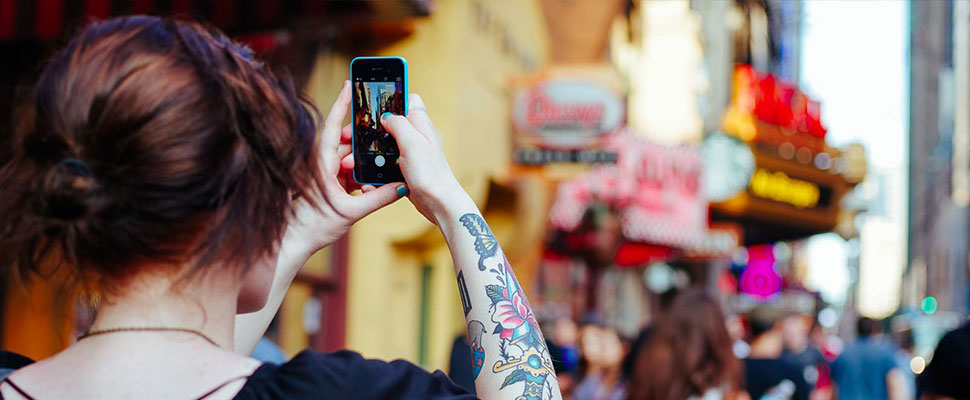False “influencers”: What is hidden in the world of social media?
This is the fraud behind the influencers who try to charge 20,000 dollars for a tweet

In recent years, social networks have changed the dynamics of information, advertising, and the economy in the world. It is estimated that in 2018 companies invest 1,600 million dollars in payments to influencers who speak and promote a certain brand, according to Media Kix. However, this rain of money that has been turned towards this industry has led to the emergence of a black market and false "influencers" that are costing the market millions of dollars.
Leer en español: Falsos "influencers": ¿Qué es lo que se esconde en el mundo de las redes sociales?
The term "influencer" refers to a person, usually between 16 and 30 years old and with skills in technology, that has some credibility on a specific topic. Likewise, he/she is a person who due to his/her presence and influence in social networks can become an interesting prescriber for a brand.
Although the concept began to be heard more strongly in the last decade, this term is not new. In 1955, the American sociologist Paul Lazarsfeld already analyzed this phenomenon. However, the term "influencer" was used exclusively to catalog public figures, celebrities, politicians, journalists, or activists who managed to reach traditional media, such as TV, radio or the press. But the digitalization of technology, the arrival of social networks such as YouTube, and the entry of the Smartphone IGNORE INTO society gave power to the common people, thus transforming the dynamics of consumption.
The economy of influence
Social networks became a money factory, both for companies and users because the world turned to these. Numerous studies have shown that on average people can spend 30% of their time a day browsing social networks, according to the Social Media Today portal.
According to data from Statista, the number of active users per month on these platforms exceeds populations of entire countries: YouTube has 1,500 million, Facebook adds more than 2,160 million, and Instagram has 800 million active users per month. These figures and the statistics that social media show, make these social networks the perfect place to experiment, schedule, and sell products or services more effectively.
Every like, comment, follower, or interaction that a user has on a platform can represent money, a formula that the influencers understood and knew how to take advantage of. According to data from Captiv8, a company that links influencers with brands, someone with 100,000 followers on Twitter can earn up to 2,000 dollars for a single promoted tweet, while a user with a million followers could charge up to 20,000 dollars.
On YouTube, the figures are not minor. According to statistics collected by Business Insider, the highest paid YouTube stars earned a cumulative total of 127 million dollars in 2017. In Instagram, the scenario is not different either, since an account with more than one million followers can charge up to 9,000 dollars for a sponsored post, according to a report from the company Media Kix.
Behind the gold, fraud
Those who arrived actively and early on platforms such as Instagram and YouTube found a fertile and virgin terrain, from which they begin to reap their fruits. On the contrary, those who entered the game in 2015, 2016 or 2017 have risen very late to the "influencer success" train.
However, the interest of companies and individuals who try to conquer the millions of users who surf the Internet every day has generated a black market around the dynamics, and millions in losses for the industry.
In the world of social networks, every like, comment, interaction, or follower has a potential value for brands and influencers. This has led to the birth of specialized companies that sell followers and false interactions, both to influencers and renowned Hollywood celebrities, politicians and public figures.
This purchase of followers and interactions has varied costs in the market, but some can be achieved for up to 25 and 40 dollars per month. With this minimum investment, the accounts of the influencers are strengthened quickly, improving their power to negotiate with brands through fraudulent practices.
Many companies, especially in Latin America where the subject is relatively new, are unaware of this type of tricks carried out by the so-called "influencers", who with thousands of followers and false interactions manage to close commercial agreements that ultimately will not have the expected results by the brand.
According to Media Kix records, each year companies could be losing 100 million dollars to hire the services of influencers who increase their numbers in a false way. However, these fraudulent practices do not seem to hurt the marketing projections, as it is estimated that companies spend 1.6 billion dollars in payments to influencers, only on Instagram, in 2018.
Latin American Post | Krishna Jaramillo
Translated from "Falsos "influencers": ¿Qué es lo que se esconde en el mundo de las redes sociales?"





